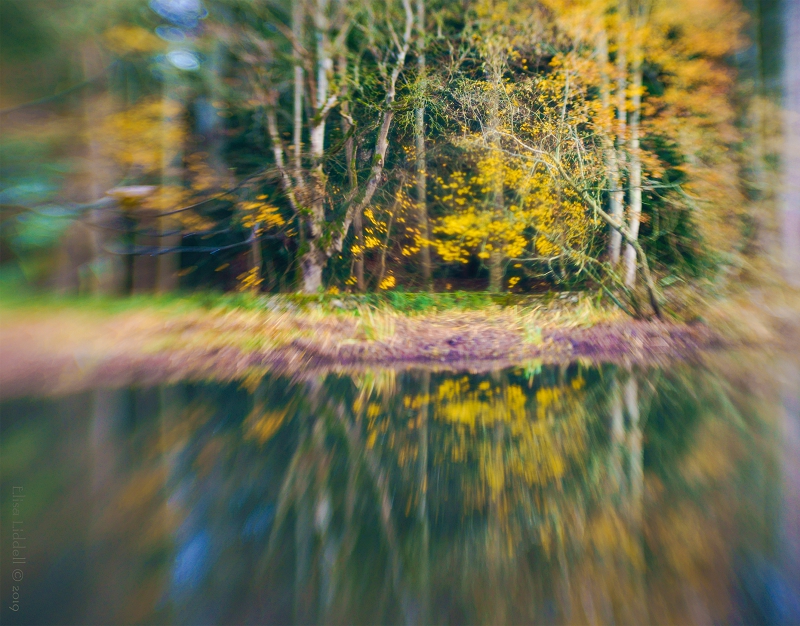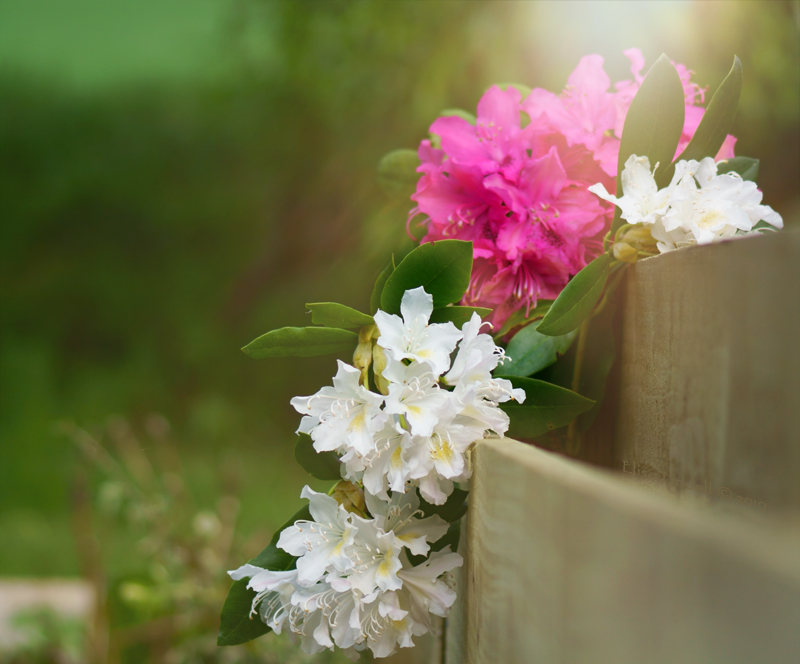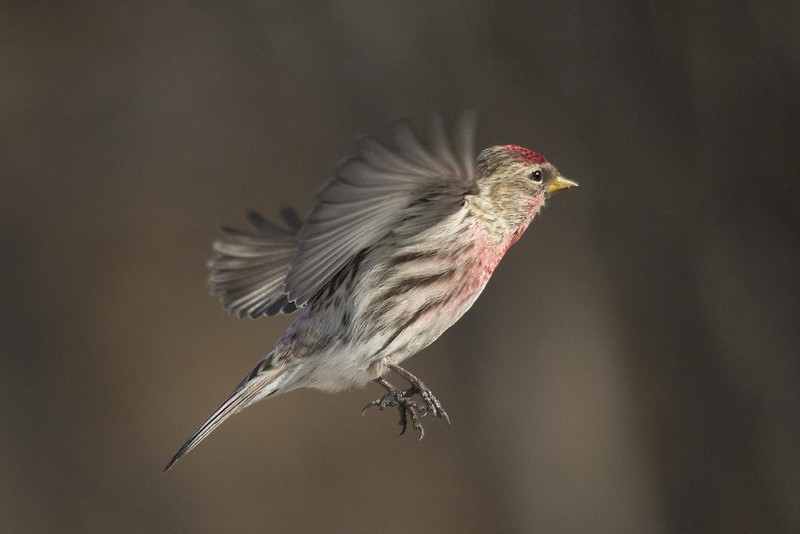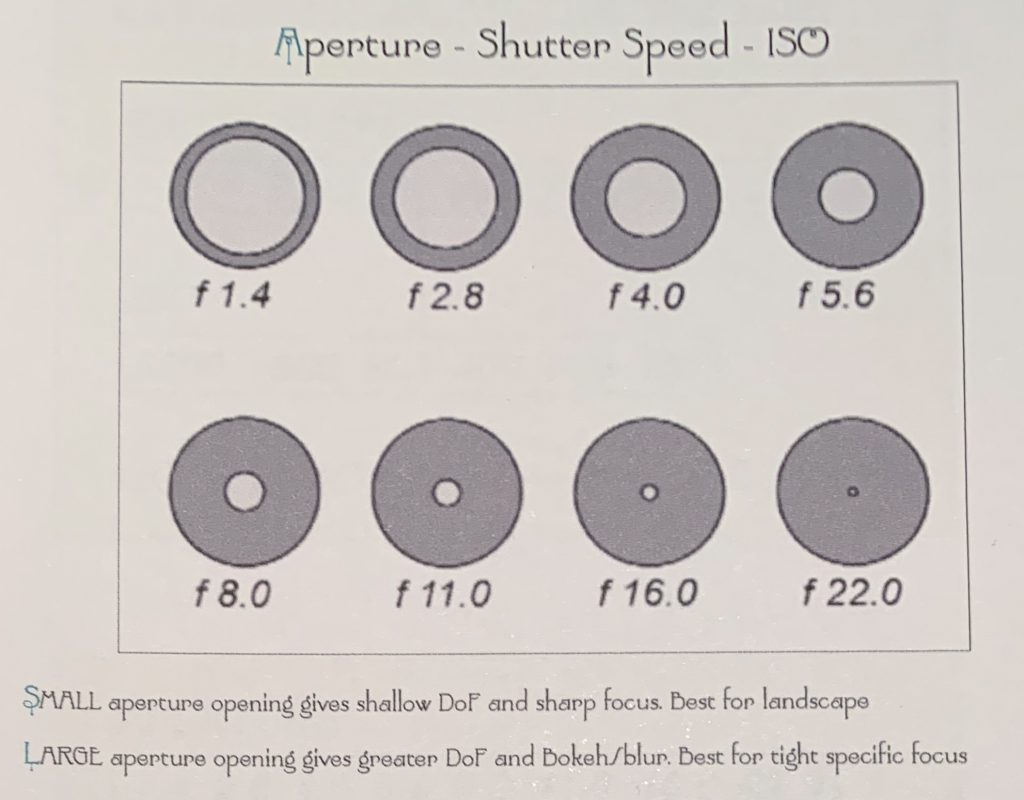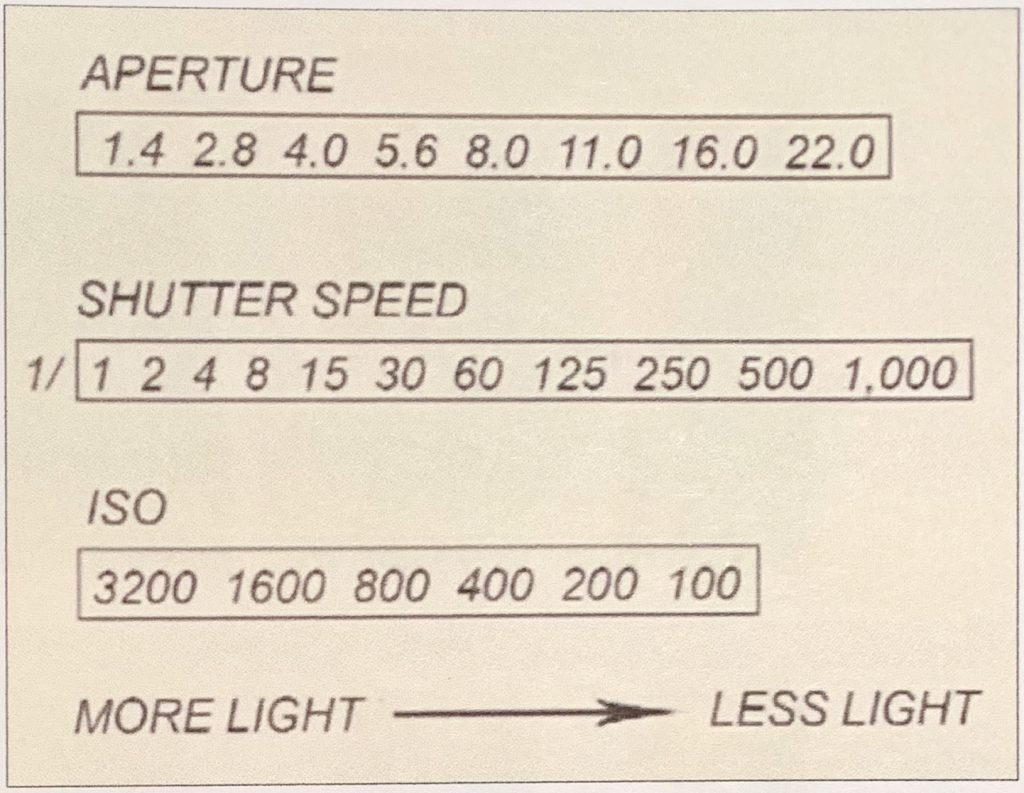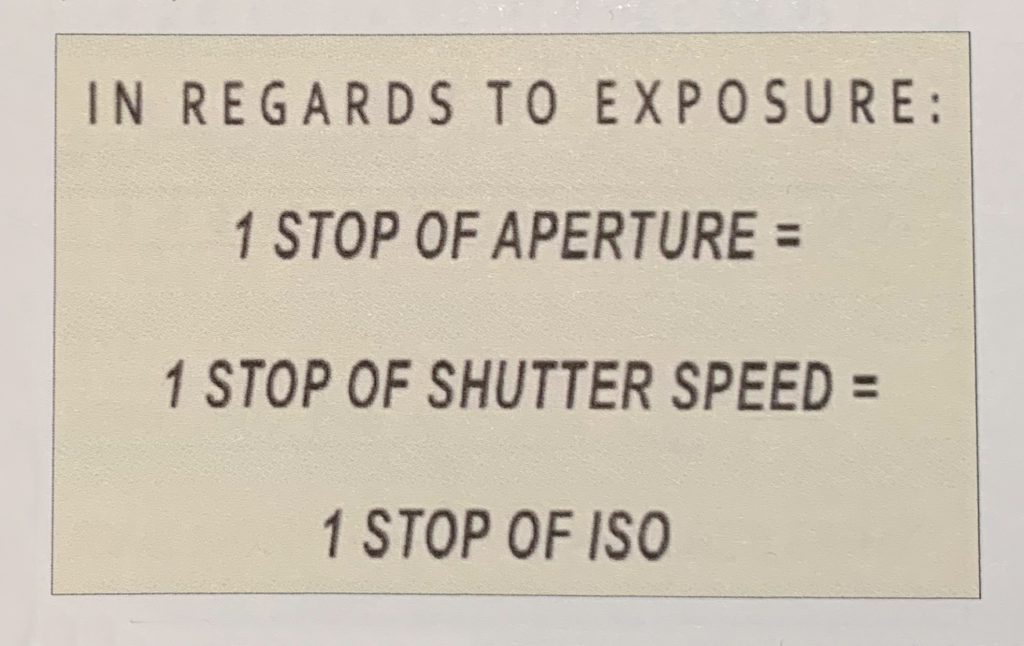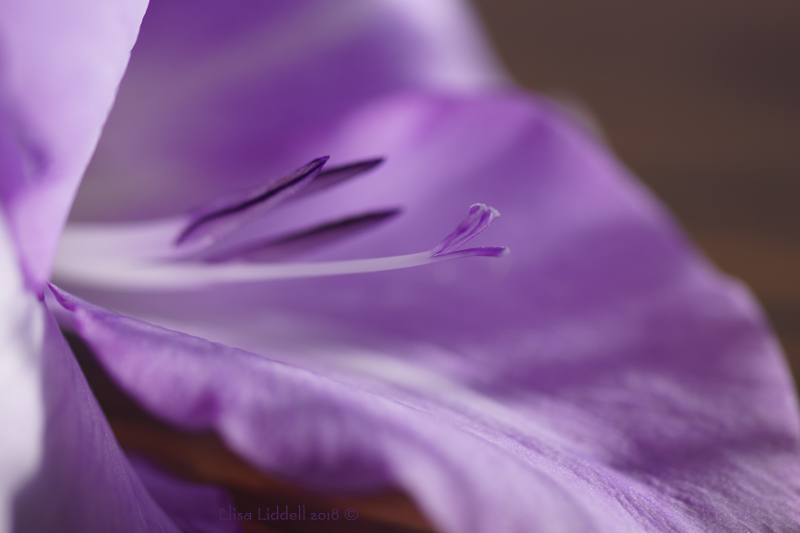
Yes. Year three of the Covid-19 pandemic begins. It has been such a long journey since November/December 2019 when we first read about a virulent new virus causing concern in Wuhan, China …. then January 2020 when we found it was here in Aberdeenshire, brought back from Italy by someone returning from a ski holiday in the Italian Alps.
It is hard to recall just how innocent, how ignorant we were of what might lie ahead as the new decade began! So how does the world look as 2022 begins?
In pandemic terms the Westminster government is yet again trying to suggest that the pandemic is over … well NEARLY. Desperate for some ‘good news’ it is repeating the mistakes of last year by trumpeting the next “Freedom Day” of no face masks and back to work in the office.
The reason for this (looked at with a cynical eye) is to divert the populace away from the ocean of lies, corruption and sleaze that is engulfing Boris Johnson and his government. It is difficult to find a way to summarise this … Partygate, lying (both to the Commons and the people), bullying and intimidation of MPs … just a tiny taste of the sewer that the ‘national’ government has become. It is being revealed day after day. Desperate attempts to shore up the government mean that throwing vulnerable citizens under the Covid bus is just one plan to divert attention away from the mess they are in. Declare the pandemic over – compare it to a winter ‘flu once again.
And where am I personally as the year begins? Well my energy seems to have shrunk to the size of a walnut! I guess 2 years of constant stress and anxiety would be enough of a problem for the ME/PVS (Post Viral Syndrome) my body has had to live with over the past 30 years. I used to avoid the annual ‘flu jab because it took months to recover from the after-effects. But Covid has redrawn the map! Now I have had 2 ‘flu jabs and 3 Covid jabs. I guess the answer is right there! And since the booster jab of Pfizer I have had some strange side-effects such as alterations to my sense of taste. Nori, which I love, became quite horrible. This winter’s ‘flu jab was administered at the same time as the booster shot, and the arm muscle involved has remained painful – even now – 3+ months after the jab.
So I find very little energy for my creative drive. Even back-pedalling on the housework, and neglecting the garden, I find myself sinking into watching DVDs or recorded TV programmes rather than beginning my painting for the year! And endless card games on my iPhone take the time I used to spend reading poetry, or books on Cezanne, or my only magazine on B+W photography. My eating is chaotic, with far too much sweet (cakes and chocolates) and little salad and fresh fruit! So I have a mountain to climb to get myself back on track!
It is only slowly, as the end of the month approaches, that I feel able to take some tentative steps towards what was ‘normal’ in 2021, or further back in 2020, and even pre-pandemic times. I sourced a ‘new’ vintage lens on eBay, and now have a second Meyer Optik Gorlitz lens – this time a closer Domiplan 50mm. Not expensive, and very like the Helios range, but giving an hexagonal bokeh light ball. And I am beginning the year by brushing up on my photographic skills.
Something I can do every day, especially in the early morning, is to step outside and shoot the dawn from the garden. It is often the most interesting and colourful time of the day.
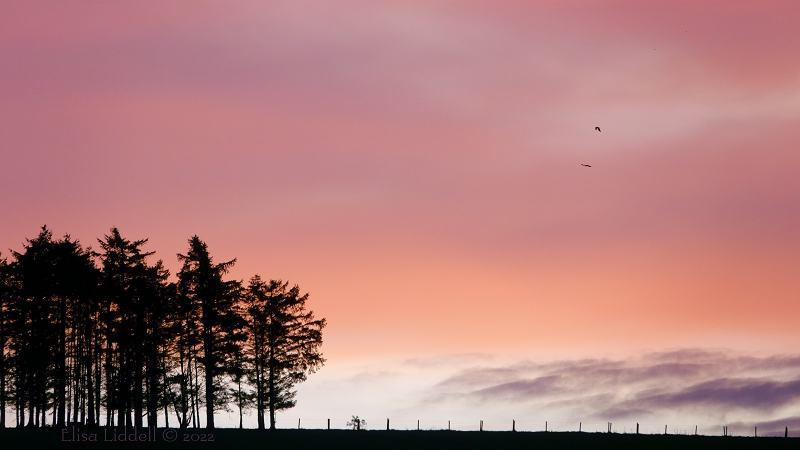
In winter a stunning dawn like this can resolve into a grey, overcast day. So the zoom of my RX10m3 is by the door, to catch the ‘lightshow’ that welcomes the morning!

The other photogenic morning offering is the early mist. Here I tried out the new Domiplan 50 lens outdoors. Focusing on something as insubstantial as the mist across the howe is quite demanding of any lens!
And indoors I’ve been using the Domiplan 50mm as my ‘go-to’ lens. I find it’s the best way to learn a new lens, to have it to hand as much as possible, and shoot anything and everything that catches my eye. Looking at the results later on the PC monitor I can discard disappointing shots, but all of them build up my knowledge of what are the strengths and weaknesses of a lens.
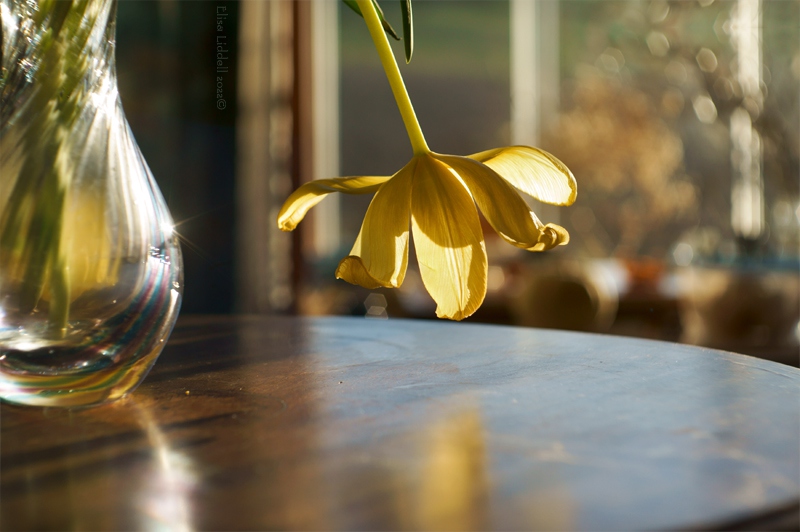
The remnants of a vase of yellow tulips, caught in the sunshine and reflected on the wooden table surface.
The hexagonal bokeh in the window was a delight.
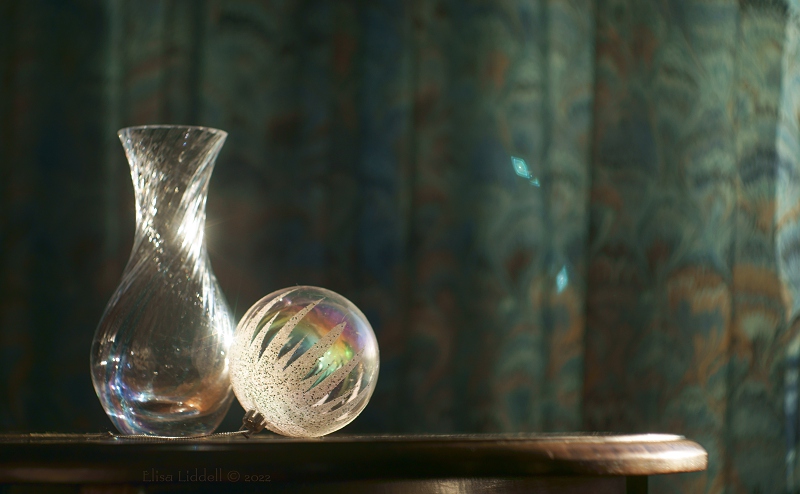
A ‘grab the camera’ moment as the sun caught some glass photo props before I put them away! I was about to finish for the day … and prepare some lunch.
One of the few remaining ‘normal’ activities we have is the weekly shopping trip to Inverurie. The range of shops we visit is reduced to just two, and has been since the early days of the pandemic. It makes for a quick ‘exposure’ with masks and sanitiser …. early in the day before the shops are crowded. But there is a bonus to the early start, especially in the winter, as it means we drive through the dawn! We drive into the sunrise as we go, and the sun is behind us as we return. Both effects can create beautiful photographs!
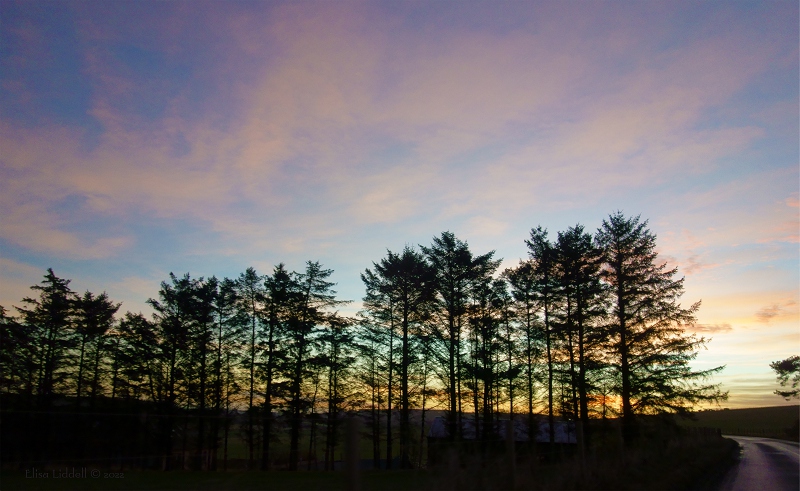
As the daily ‘light show’ of the dawn unfolds before our eyes, there is the chance of the sky silhouetting the trees by the roadside. Irresistible for me with my Sony RX100 – which is perfect for such ‘drive by’ shots.

By the time the shopping is done, the day has opened up, and with the low winter sun at our backs we can take in the full glory of the world we live in. I’ve recently learned that the clouds we often see here are called Lenticular and can look like rolls of cotton wool.
By the middle of January we made our first (short) trip to the coast – the first since last April! The day was grey and cold, but we missed being able to walk by the sea and enjoy the freedom to exercise in fresh air, walk on the sand, and feel the power of the sea as it meets the shore. The damage inflicted by Storm Arwen has closed our local exercise places, Fyvie Castle and Leith Hall, so the sea is the only space that is open to us.
As it turned out we found that Storm Arwen has robbed us of our usual seaside spots too! The road to Banff Scotstown was closed off, with nowhere to park. so we couldn’t even park and investigate on foot!
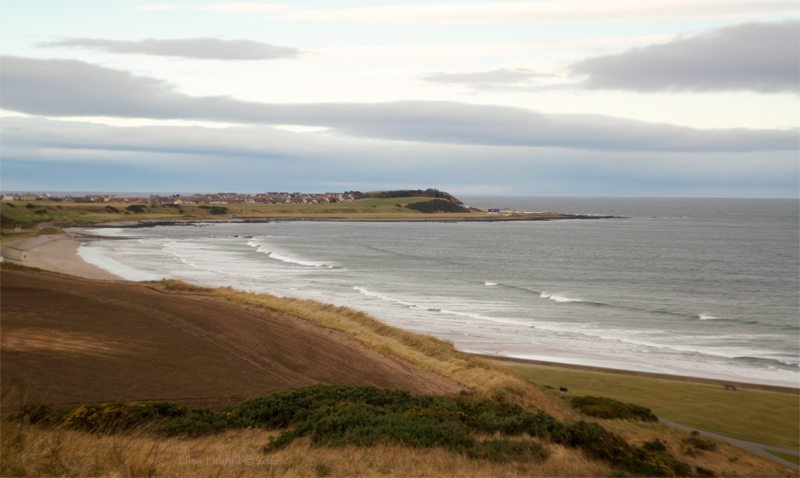
I had to shoot Banff Bay from above, fighting a gale as I tried to catch the sea with my new lens! It was beautiful, but I couldn’t stay long, as standing upright was a battle in itself!
We decided to try Portsoy, further up the coast. If the sea was too wild and windy, then the shelter of Little Loch Soy might be a place we could stretch our legs and get some exercise. We discovered that Storm Arwen had marked even Little Loch Soy, with trees destroyed, and only freshly cut tree stumps remaining in some places.
I had decided to take my Lensbaby Double Glass lens with me, as it too had been languishing over the past few months. At least I could try for some interesting lens effects, if the day was grey and the lochside walk was dull!

As it happened the Lensbaby did transform the dull day into something more magical! Back home I took 3 Lensbaby shots and wove them into a wintery wonderland. It is amazing what the Lensbaby can create!
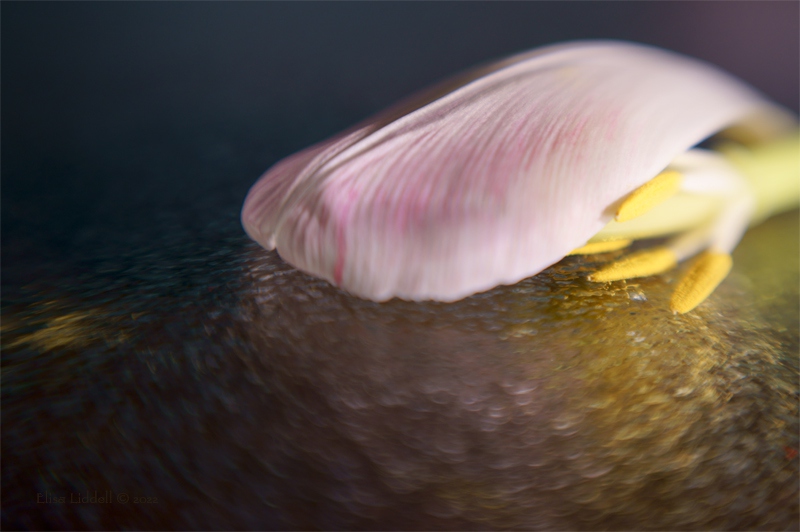
Back home I played with the Lensbaby indoors. With macro rings I can get in really close. There are lovely swirling patterns the lens can create with a fallen tulip petal and stamens, on pebble glass.
As the month progressed we continued to slowly clear up the damage from Storm Arwen. So many branches brought down in the garden, and debris together with leaves needing to be hauled up to the recycling centre in Turriff. As the month drew to a close we were warned of another severe storm arriving. The closing weekend was going to be graced with not one but two storms – Storm Malik and Storm Corrie. So before the worst began to hit Aberdeenshire we returned to the coast and treated ourselves to fish and chips by the sea at Whitehills.

The weather was already becoming wild and stormy, so we ate in the comfort of the car before venturing out to catch the surf breaking on the rocks. As it happened this was the quiet before the real storm arrived!
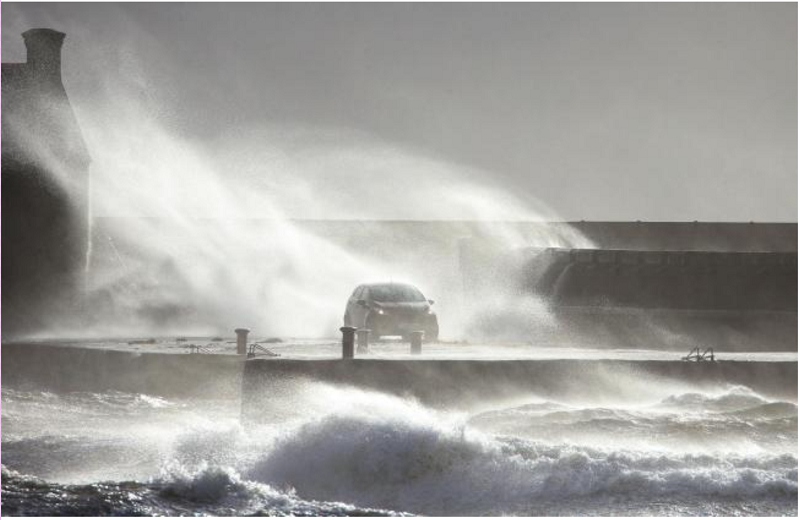
An online capture of the two storms! We waited for power cuts, and for trees in the garden to be brought down, but we were lucky and survived with just more debris to clear away!
And so the month draws to a close with us feeling battered and bruised and very tired! Anxiously waiting for both storms to pass, and wondering how we could run our generator with 70+ mph gales battering us. We look forward to a more peaceful February, and are in need of time to rest and recover!
On to February, and the hope of calmer weather!
Back to the 2022 Cover page
Back to Notebooks cover
Flickr holds Elisa’s online Photo Gallery
© 2022 Elisa Liddell

